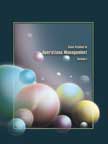Wal-Mart's Supply Chain Management Practices




|
|
ICMR HOME | Case Studies Collection
Case Details:
Case Code : OPER020
Case Length : 12 Pages
Period : 1998 - 2003
Organization : Wal-Mart
Pub Date : 2003
Teaching Note :Not Available
Countries : USA
Retail ing
To download Wal-Mart's Supply Chain Management Practices case study
(Case Code: OPER020) click on the button below, and select the case from the list of available cases:

Price:
For delivery in electronic format: Rs. 400;
For delivery through courier (within India): Rs. 400 + Rs. 25 for Shipping & Handling Charges
» Operations Case Studies
» Case Studies Collection
» ICMR HOME
» View Detailed Pricing Info
» How To Order This Case
» Business Case Studies
» Case Studies by Area
» Case Studies by Industry
» Case Studies by Company
Please note:
This case study was compiled from published sources, and is intended to be used as a basis for class discussion. It is not intended to illustrate either effective or ineffective handling of a management situation. Nor is it a primary information source.
|
|
<< Previous
Background Note Contd...
|
Walton not only looked for opportunities to open stores in other small towns but
also explored the possibility of introducing innovative practices such as
self-service. As the need for people to manage his stores increased, Walton
tried to attract talented and experienced people from other stores.
By 1969, Walton had established 18 Wal-Mart stores, reporting an annual sale of
$44 million. In mid 1970s, Wal-Mart acquired 16 Mohr-Value stores in Michigan
and Illinois. By the late 1970s, the retail chain had established a pharmacy, an
auto service center, and several jewellery divisions.
|
|
In the 1980s, Wal-Mart continued to grow rapidly due to the huge customer
demand in small towns, where most of its stores were located. Commenting on
the growth of Wal-Mart, Walton said: "When we arrived in these small towns
offering low prices every day, customer satisfaction guaranteed, and hours
that were realistic for the way people wanted to shop, we passed right by
that old variety store competition, with its 45 percent mark ups, limited
selection and limited hours."
|
|
Wal-Mart
stores were located at a convenient place in a big warehouse-type
building and targeted customers who bought merchandise in bulk.
Customers could buy goods at wholesale prices by becoming members and
paying a nominal membership fee. By 1984, there were 640 Wal-Mart stores
in the US, generating sales of about $4.5 bn and accruing profit of over
$200 mn.
Wal-Mart suffered a setback in 1992, when Walton died after a prolonged
illness. But it continued its impressive growth in the 1990s, focusing
more on establishing its stores overseas. In 1992, Wal-Mart expanded its
operations in Mexico by entering into a joint venture with Cifra. |
Two years later, the company acquired 122 Woolco stores from Woolworth, Canada.
By 1997, Wal-Mart had become the largest volume discount retailer in Canada and
Mexico. In 1997, Wal-Mart acquired the 21-store German hypermarket chain,
Wertkauf. Other international expansion efforts included the purchase of
Brazilian retailer Lojas Americans' 40 percent interest in their joint venture,
and the acquisition of four stores and additional sites in South Korea from
Korea Makro. In January 1999, Wal-Mart expanded its German operations by buying
74 stores of the hypermarket chain, Interspar. The stores were acquired from
Spar Handels AG, which owned multiple retail formats and wholesale operations
throughout Germany...
Excerpts >>
|
|



